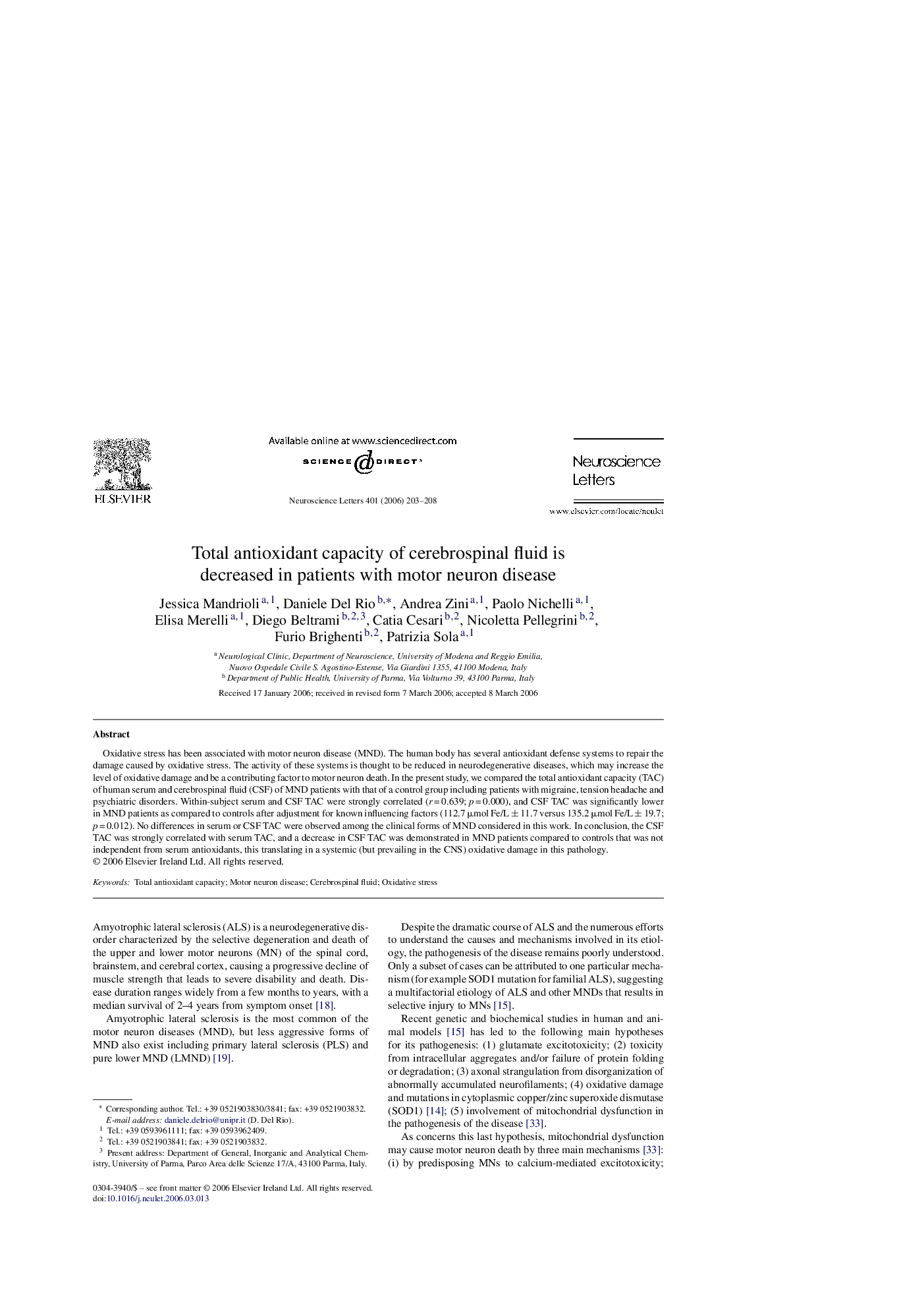| Article ID | Journal | Published Year | Pages | File Type |
|---|---|---|---|---|
| 4350432 | Neuroscience Letters | 2006 | 6 Pages |
Oxidative stress has been associated with motor neuron disease (MND). The human body has several antioxidant defense systems to repair the damage caused by oxidative stress. The activity of these systems is thought to be reduced in neurodegenerative diseases, which may increase the level of oxidative damage and be a contributing factor to motor neuron death. In the present study, we compared the total antioxidant capacity (TAC) of human serum and cerebrospinal fluid (CSF) of MND patients with that of a control group including patients with migraine, tension headache and psychiatric disorders. Within-subject serum and CSF TAC were strongly correlated (r = 0.639; p = 0.000), and CSF TAC was significantly lower in MND patients as compared to controls after adjustment for known influencing factors (112.7 μmol Fe/L ± 11.7 versus 135.2 μmol Fe/L ± 19.7; p = 0.012). No differences in serum or CSF TAC were observed among the clinical forms of MND considered in this work. In conclusion, the CSF TAC was strongly correlated with serum TAC, and a decrease in CSF TAC was demonstrated in MND patients compared to controls that was not independent from serum antioxidants, this translating in a systemic (but prevailing in the CNS) oxidative damage in this pathology.
